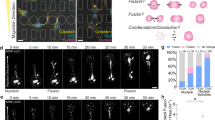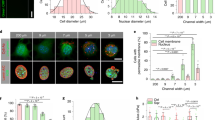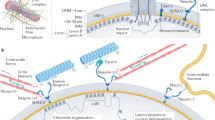Abstract
The programmed elimination of cells during apoptosis is distinct from necrosis both morphologically and biochemically. Currently, the morphological description of apoptosis discriminates between the segregation of the nucleolus and the so called ‘chromatin condensation'. The latter originates from observations of electron dense material adjacent to the nuclear envelope of apoptotic nuclei. Although there is ample evidence for an involvement of DNA in electron dense marginations, their true nature is still unknown. By studying apoptosis in FDCP-Mix, a pluripotent murine haemopoietic stem cell line, we found morphological and histochemical evidence that electron dense material at the nuclear envelope (NE) has emerged as a result of the segregation of nucleoli in association with the nuclear membrane. The remaining electron dense and homogenous bulk of the nucleolus labels for RNAse-gold, but even more intensely for DNAse-gold, and therefore could possibly be mistaken as ‘condensed chromatin’ in the light microscope. The labelling of the electron dense material for DNase-gold in FDCP-Mix could be explained by a migration of DNA into the bulk of the nucleoli at an early stage of cell death.
Similar content being viewed by others
Log in or create a free account to read this content
Gain free access to this article, as well as selected content from this journal and more on nature.com
or
Author information
Authors and Affiliations
Corresponding author
Additional information
Edited by L. Fesus
Rights and permissions
About this article
Cite this article
Reipert, S., Bennion, G., Hickman, J. et al. Nucleolar segregation during apoptosis of haemopoietic stem cell line FDCP-Mix1. Cell Death Differ 6, 334–341 (1999). https://doi.org/10.1038/sj.cdd.4400500
Received:
Revised:
Accepted:
Published:
Issue date:
DOI: https://doi.org/10.1038/sj.cdd.4400500



